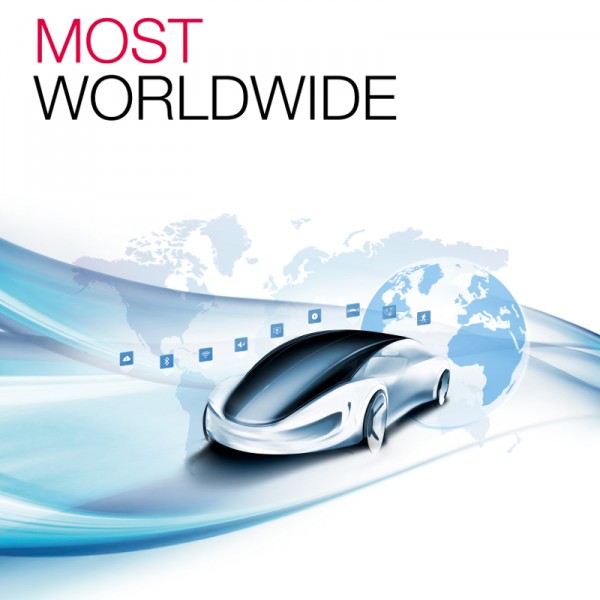GM’s new Cadillac CT6 implements MOST Technology for its network system

MOST Cooperation celebrates worldwide acceptance of over 200 vehicle models with MOST inside
Photo by MOST Cooperation
The MOST® Cooperation – standardization organization for the leading automotive multimedia network technology Media Oriented Systems Transport (MOST) – welcomes the worldwide acceptance of MOST Technology with GM’s new Cadillac CT6 as the 204th vehicle model implementing MOST. “We are delighted about the continued implementation of this automotive network standard by key carmakers worldwide,” stated Henry Muyshondt, MOST Cooperation Administrator. “In fact, MOST is so widely used now, that MOSTCO is planning to transfer the MOST Specifications to the International Standards Organization (ISO). The aim is to simplify access and make future technical developments go through a recognized standards development organization.”
Three MOST Generations
The first generation, MOST25, operates at 25 Mbit/s. It made it into production only three years after the MOST Cooperation was founded: in 2001, the first MOST car was introduced. MOST25 is based on optical data transmission using optical fibers.
With MOST50, the MOST Cooperation doubled the bandwidth for automotive infotainment solutions from 25 to 50 Mbit/s. The “MOST Specification of Electrical Physical Layer Rev. 1.1” is an additional key specification that enables data transmission over a shielded or even an unshielded twisted pair (UTP) cables while meeting the stringent automotive electromagnetic compatibility requirements.
MOST150 is the third generation, offering a bandwidth of 150 Mbit/s. With transmission over legacy POF/LED optical physical layer, MOST150 offers a smooth migration from MOST25 and MOST50. In addition to higher bandwidth, MOST150 features an isochronous transport mechanism to support extensive video applications as well as an Ethernet channel for the efficient transport of IP-based packet data. Additionally, the “MOST150 Coax Physical Layer Sub-Specification Rev. 1.1” defines a physical layer that is able to provide bi-directional communication and to supply power over a single coaxial cable.
MOST offers a network architecture for HD audio/video and IP-based applications: MOST provides a powerful, flexible, and up-gradable network architecture that forms a stable, robust backbone to easily and seamlessly integrate many applications. The MOST network concept is inherently scalable and extendable with respect to speed and types of data channels. MOST connects to other industry standards such as Universal Plug and Play (UPnP) communication based on the Internet Protocol (IP) and AUTOSAR.
For more information, please visit http://www.mostcooperation.com.
News Categories
- » NEWS HOME
- » Automation & Robotics
- » Industry 4.0
- » Material Handling
- » Sensors
- » Quality & Testing
- » Machine Vision
- » Laser & Optics
- » Metalworking
- » Motion Control & Drives
- » Hydraulics & Pneumatics
- » Process Industry
- » Renewable Energy
- » Agriculture
- » Home & Office Furniture
- » Environmental Tech




